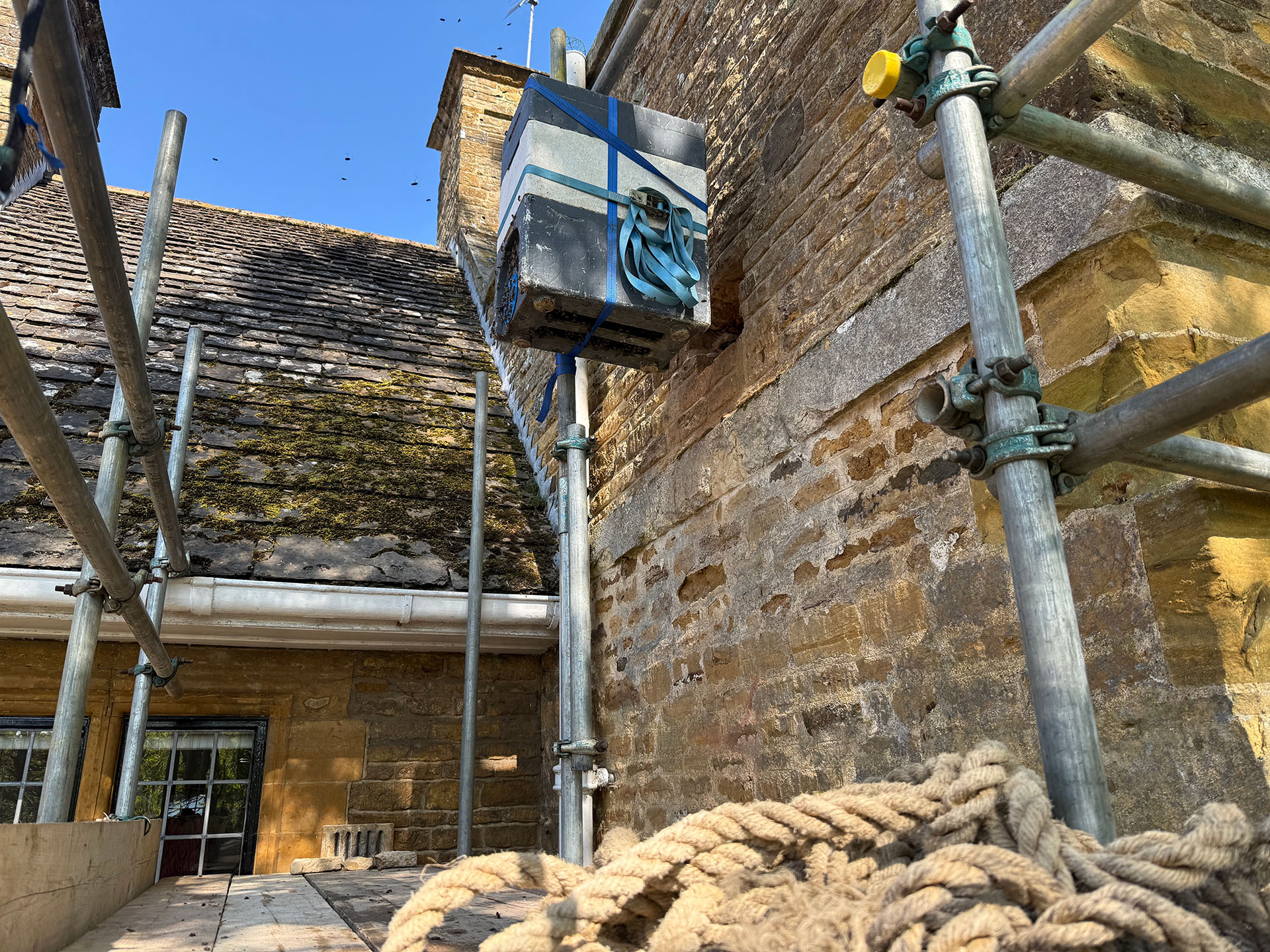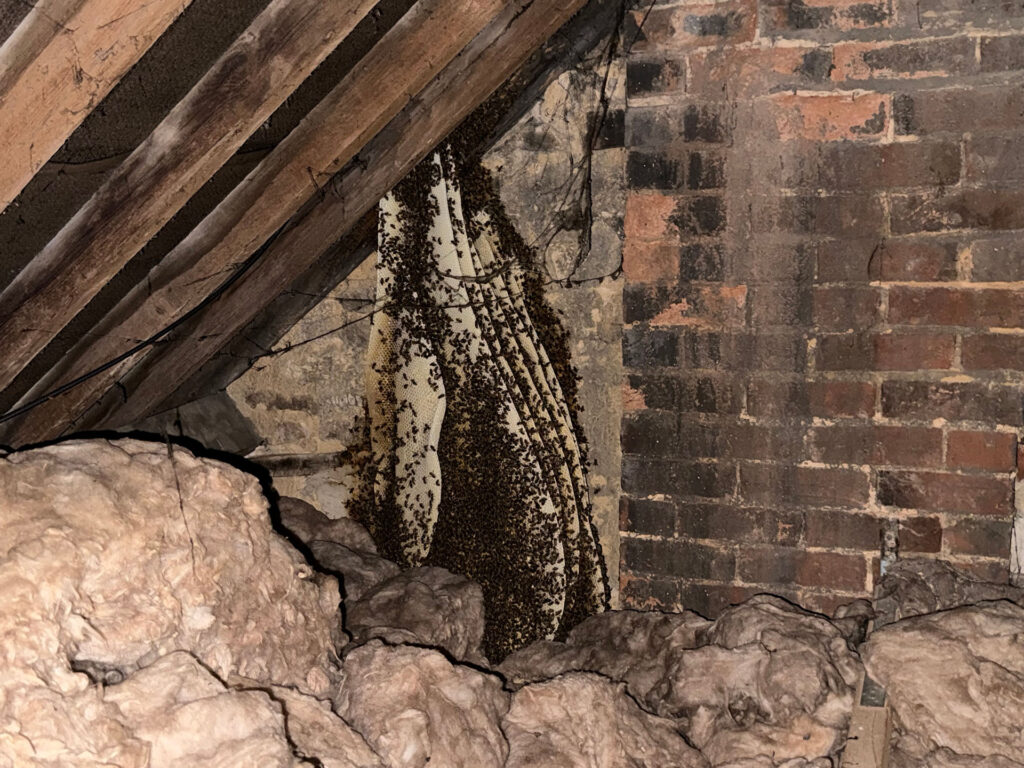
How Much Do Live Honeybee Removals From Buildings Cost?
How much does a honeybee removal from a building cost, is a question we get asked very regularly, particularly during the honeybee swarming season between April and July each year.
The easy answer is ‘It depends’, however, we realise that this is not a very helpful response, and in line with our ethos of being totally up front and honest with customers, we have set out in this article some of the key costs incurred when removing an established honeybee colony from a building.
What is Involved in the Cost of a Bee Removal?
The key factors that influence the cost of honeybee removals include the length of time the bees have been present; the exact location of the bees in a building; the design and structure of the building (including whether it is Listed, is built with particularly difficult to source materials such as a Collyweston stone slate roof; or whether asbestos containing materials might be present etc); whether scaffold will be required, and whether there are specific local risk factors.
Every live honeybee removal is different, but there are some common features in every removal.
iX5 Pest Control
- 7 Days A Week Service
- Weekend & Evening Appointments
- Domestic & Commercial Pest Control
- Contactless Payment Methods
- Comprehensive Initial Survey
Additional Services

Initially we will undertake a site survey to assess all the above factors and more. From this we then work up a full written proposal and fixed quote for the work, liaising with scaffolders and other trades where necessary. During the survey we give bespoke advice on the bees and the location, along with lots of information on the work involved in getting the bees out and rehoming them. Due to the time and expense we incur in visiting to undertaking a survey and working up a proposal, and the fact we often use various bits of expensive equipment during a survey; we do charge for honeybee removal surveys. However, this is discounted off the final invoice should you decide to proceed with the removal.
Many people don’t realise the work involved in removing honeybees from a building. We estimate there is usually between two and two and a half days work in every bee removal, and this is after the time to survey and quote.
The day before a removal we spend time building a hive and frames, getting all kit ready and loading the van(s). On the day of a removal, we are usually on site around 8am and work until the bees are out of the building (often late morning / lunchtime). We then clean up the location and monitor the bees as they gradually migrate and settle into the hive we have transferred brood comb into (and the queen if we find her). We then need to leave the bees new home (the hive) on site until dusk when we return to collect it. This is because bees will be flying until it is dark. The following day, we spend cleaning up all of the kit used during the removal, and we also spend time rehoming the bees into our quarantine apiary.
Building reinstatement work sometimes takes place on the day of the removal and sometimes the following day. This often depends on the nature of works required and the location, amongst other factors.
In addition to the time outlined above (two to two and a half days work on average), there are often scaffold costs and costs for builders or roofers etc.
So, What are the Average Costs?
If it is needed, scaffold for a bee removal can cost on average anywhere from £600 plus VAT to £1500 plus VAT, or more, depending on the location and complexity of the scaffold required. This really depends on whether it is a simple platform at first floor level, or a two, or even three lift scaffold to access a high chimney.
Depending on the location of the bees in a building, we often need to bring in specialist trades, such as bricklayers, plasterers or flat roof specialists, to assist with opening up and / or reinstatement. The costs for these can range anywhere from maybe £250 plus VAT to £2 or £3k plus VAT, depending on exactly what work is required. This can increase significantly if there is asbestos containing material present or other complexities to resolve.
On top of these costs, there is our time and expertise in project managing the whole operation and ensuring the bees are safely and effectively removed from the building, and a successful conclusion to the whole job. As outlined, we usually estimate there is around two to two and a half days work for us with the majority of bee removals.
Taking all of this into account, it may come as no surprise to learn that most bee removals will fall into the range of £1500 plus VAT to around £5000 plus VAT, but increasing up to around £10,000 plus VAT, or more in some cases; with chimney removals often being around the mid to upper end of the spectrum. However, there are occasionally some very simple jobs that might be delivered for less than £1000 plus VAT.
Where we are project-managing all aspects of a bee removal, costs are usually higher, but it is possible to reduce the overall cost of a bee removal where customers are prepared to arrange their own scaffold or building reinstatement works. We can then just take care of the bee removal aspect of a job.
The information and figures given are just a very rough guide to give you an indication of the potential cost of an average bee removal in 2025. If you require any further advice on honeybees in buildings, the following weblinks might be of interest:
- Bees in Buildings
- Bee Advice for Tenants
- Why Live Removal is Preferred over Eradication for Honeybees
- What are Honeybee Swarms (or Help – I have Bees in My Building!)
- Northampton Honeybee Removal
- Bees with a View
- Did You Know We Are Beekeepers
If you would like to book a survey or have a chat with our team about honeybees in buildings, please do not hesitate to contact us on 01604 328545, email [email protected] or use our simple contact form below.










